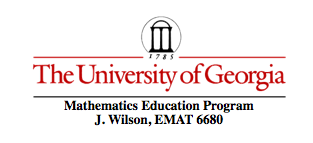
Assignment 11 : Polar Equations
Dasha Adushkina

Assignment 11 : Polar Equations
Dasha Adushkina
Welcome to Polar Equations!
Here, we will begin with a simple equation involving a polar coordinate:

This unique shape is called the n-leaf rose.
Although the name may not seem fitting to the image above, we will see below how a slight manipulation of the equation r = a+b (cos θ) will show that a rose by any other name will still look just as sweet.
Here, a slight change to the original equation is presented. When we simply have r = b cos (kθ), a circle is formed from the origin.
Notice the contrast between our original figure, outlined in purple, and our new figure, outlined in red.

Now, let us observe what happens when we change the value of k. In the demonstration below, k varies from 1 to 10.
Notice the leaves that are formed as k varies. Also, is there a relationship between the value that k takes on and the number of leaves present?
We can see that whenever k is an odd number, the number of leaves is the same odd number. This changes, however, when k is an even integer.
For instance, when k = 2, there are 4 leaves, instead of the expected 2.
In fact, we can draw the conclusion that whenever k is an even integer, the number of leaves is 2k.
Now, let us see what happens when we use sine instead of cosine. Would we expect similar results?

A similar circle is formed, and now, let us observe a demonstration of what happens to the graph when we vary k from 1 to 10.
Notice that a similar phenomenon occurs. The number of leaves still dependends on whether k is an odd or even integer, but the placement of the leaves has changed.